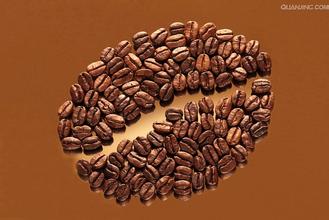What are the main types of coffee trees? why should they be raised? How to grow coffee beans
Main species of coffee tree: Robasta species
Bean shape is larger, the front gradually round, the back was round convex, crack straight.
Robasta coffee trees are native to Madagascar in central and western Africa and Indonesia in Asia, and their production accounts for about 20% to 30% of the world's production. Robasta coffee tree is suitable for planting in lowlands below 500 meters above sea level. It has strong adaptability to the environment. It can resist harsh climate, resist pests and diseases. It does not need too much artificial care when preparing soil, weeding and pruning. It can grow freely in the wild. It is an easy to cultivate coffee tree.
However, the finished product tastes bitter than Arabica, the caffeine content is also relatively high, and the quality is also inferior, so most of them are used to make instant coffee. Because it's mainly grown in Africa, most Africans drink Robasta coffee. The main type of coffee tree: Arabica.
The first is Arabica beans, beans account for 70% of the world's production, world-famous blue mountain coffee, mocha coffee, etc., almost all Arabica species. The other is the Robasta species, which is native to Congo in Africa and accounts for about 20% to 30% of the world's production. Different varieties of coffee beans have different tastes, but even the same variety of coffee trees, due to different soil, different climates and other effects, the coffee beans grown also have unique flavors. The other two species are Liberian and Ethiopian.

Important Notice :
前街咖啡 FrontStreet Coffee has moved to new addredd:
FrontStreet Coffee Address: 315,Donghua East Road,GuangZhou
Tel:020 38364473
- Prev

Production conditions of Coffee trees Shijiazhuang Cafe
Fertilization was carried out in combination with plastic surgery within 1-2 days after planting. The fertilization of young coffee trees is mainly nitrogen fertilizer, while appropriate application of phosphorus and potassium fertilizer, in order to accelerate the formation of crown and promote the development of roots. Human and animal manure and green leaf retting fertilizer also have a good effect on the growth of young coffee trees. Coffee seedlings can be fertilized for the first time two months after planting, and then once every 1-2 months. Such as human and animal dung
- Next

The culture of coffee. Types of coffee.
Blue Mountain Coffee: sour taste, sweet taste, bitter taste are very harmonious and have excellent flavor and aroma, suitable for individual coffee, suitable for moderate roasting. Second, Cuban coffee: the famous Cubita in Crystal Mountain of Cuba as the representative, adheres to the principle of making perfect coffee. Crystal Mountain is adjacent to the Blue Mountains of Jamaica, and its climatic conditions are similar, comparable to Jamaica Blue.
Related
- Does Rose Summer choose Blue, Green or Red? Detailed explanation of Rose Summer Coffee plots and Classification in Panamanian Jade Manor
- What is the difference between the origin, producing area, processing plant, cooperative and manor of coffee beans?
- How fine does the espresso powder fit? how to grind the espresso?
- Sca coffee roasting degree color card coffee roasting degree 8 roasting color values what do you mean?
- The practice of lattes: how to make lattes at home
- Introduction to Indonesian Fine Coffee beans-- Java Coffee producing area of Indonesian Arabica Coffee
- How much will the flavor of light and medium roasted rose summer be expressed? What baking level is rose summer suitable for?
- Introduction to the characteristics of washing, sun-drying or wet-planing coffee commonly used in Mantenin, Indonesia
- Price characteristics of Arabica Coffee Bean Starbucks introduction to Manning Coffee Bean Taste producing area Variety Manor
- What is the authentic Yega flavor? What are the flavor characteristics of the really excellent Yejasuffi coffee beans?

